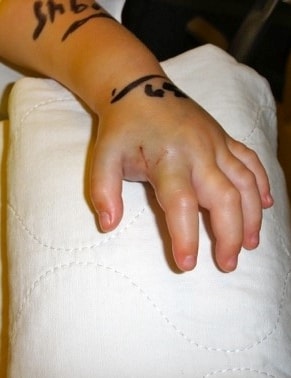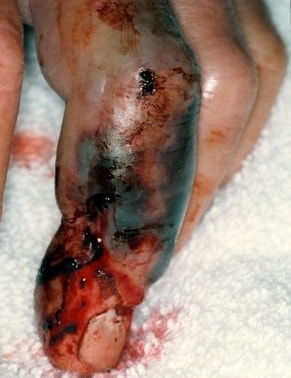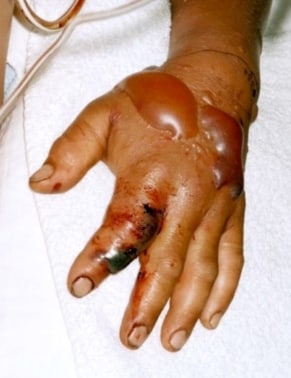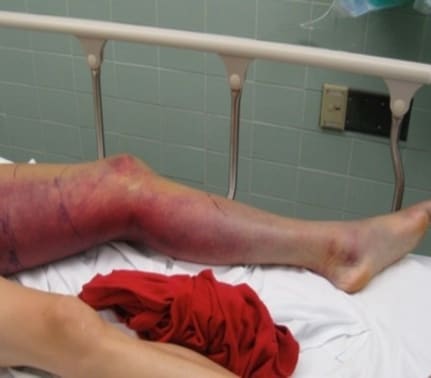Venomous Snake Bites: Symptoms & First Aid
Symptoms and First Aid
Symptoms
Signs or symptoms of a snake bite may vary depending on the type of snake, but may include:
- Puncture marks at the wound
- Redness, swelling, bruising, bleeding, or blistering around the bite
- Severe pain and tenderness at the site of the bite
- Nausea, vomiting, or diarrhea
- Labored breathing (in extreme cases, breathing may stop altogether)
- Rapid heart rate, weak pulse, low blood pressure
- Disturbed vision
- Metallic, mint, or rubber taste in the mouth
- Increased salivation and sweating
- Numbness or tingling around face and/or limbs
- Muscle twitching
Signs of Snake Bite




Photos courtesy of Sean P. Bush.
First Aid
Workers should take these steps if a snake bites them:
- Seek medical attention as soon as possible (dial 911 or call local Emergency Medical Services [EMS]).
- Antivenom is the treatment for serious snake envenomation. The sooner antivenom can be started, the sooner irreversible damage from venom can be stopped.
- Driving oneself to the hospital is not advised because people with snakebites can become dizzy or pass out.
- Take a photograph of the snake from a safe distance if possible. Identifying the snake can help with treatment of the snakebite.
- Keep calm.
- Inform your supervisor.
- Apply first aid while waiting for EMS staff to get you to the hospital.
- Lay or sit down with the bite in a neutral position of comfort.
- Remove rings and watches before swelling starts.
- Wash the bite with soap and water.
- Cover the bite with a clean, dry dressing.
- Mark the leading edge of tenderness/swelling on the skin and write the time alongside it.
Do NOT do any of the following:
- Do not pick up the snake or try to trap it. NEVER handle a venomous snake, not even a dead one or its decapitated head.
- Do not wait for symptoms to appear if bitten, get medical help right away.
- Do not apply a tourniquet.
- Do not slash the wound with a knife or cut it in any way.
- Do not try to suck out the venom.
- Do not apply ice or immerse the wound in water.
- Do not drink alcohol as a painkiller.
- Do not take pain relievers (such as aspirin, ibuprofen, naproxen).
- Do not apply electric shock or folk therapies.
